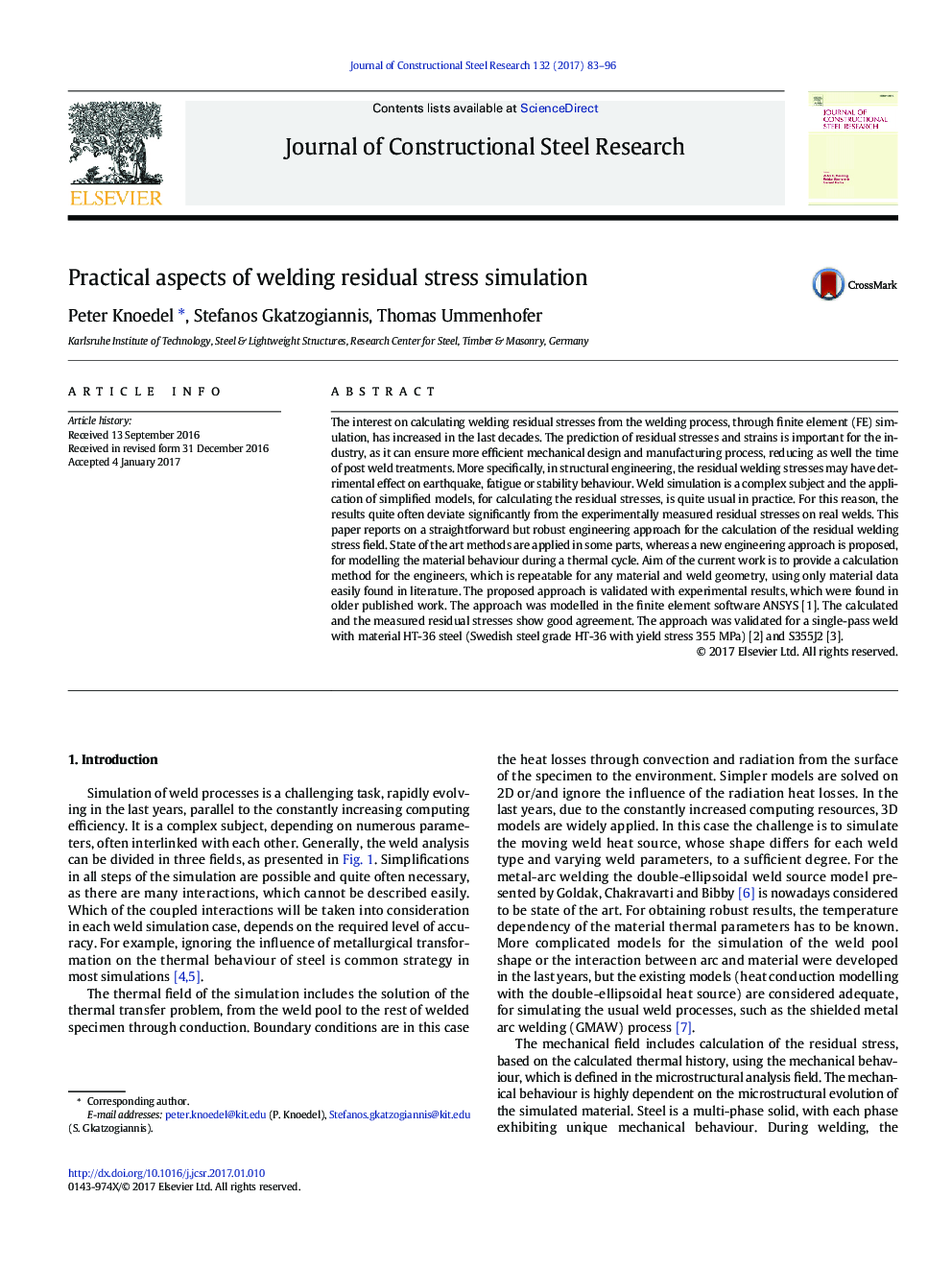| Article ID | Journal | Published Year | Pages | File Type |
|---|---|---|---|---|
| 4923368 | Journal of Constructional Steel Research | 2017 | 14 Pages |
Abstract
The interest on calculating welding residual stresses from the welding process, through finite element (FE) simulation, has increased in the last decades. The prediction of residual stresses and strains is important for the industry, as it can ensure more efficient mechanical design and manufacturing process, reducing as well the time of post weld treatments. More specifically, in structural engineering, the residual welding stresses may have detrimental effect on earthquake, fatigue or stability behaviour. Weld simulation is a complex subject and the application of simplified models, for calculating the residual stresses, is quite usual in practice. For this reason, the results quite often deviate significantly from the experimentally measured residual stresses on real welds. This paper reports on a straightforward but robust engineering approach for the calculation of the residual welding stress field. State of the art methods are applied in some parts, whereas a new engineering approach is proposed, for modelling the material behaviour during a thermal cycle. Aim of the current work is to provide a calculation method for the engineers, which is repeatable for any material and weld geometry, using only material data easily found in literature. The proposed approach is validated with experimental results, which were found in older published work. The approach was modelled in the finite element software ANSYS [1]. The calculated and the measured residual stresses show good agreement. The approach was validated for a single-pass weld with material HT-36 steel (Swedish steel grade HT-36 with yield stress 355Â MPa) [2] and S355J2 [3].
Related Topics
Physical Sciences and Engineering
Engineering
Civil and Structural Engineering
Authors
Peter Knoedel, Stefanos Gkatzogiannis, Thomas Ummenhofer,
